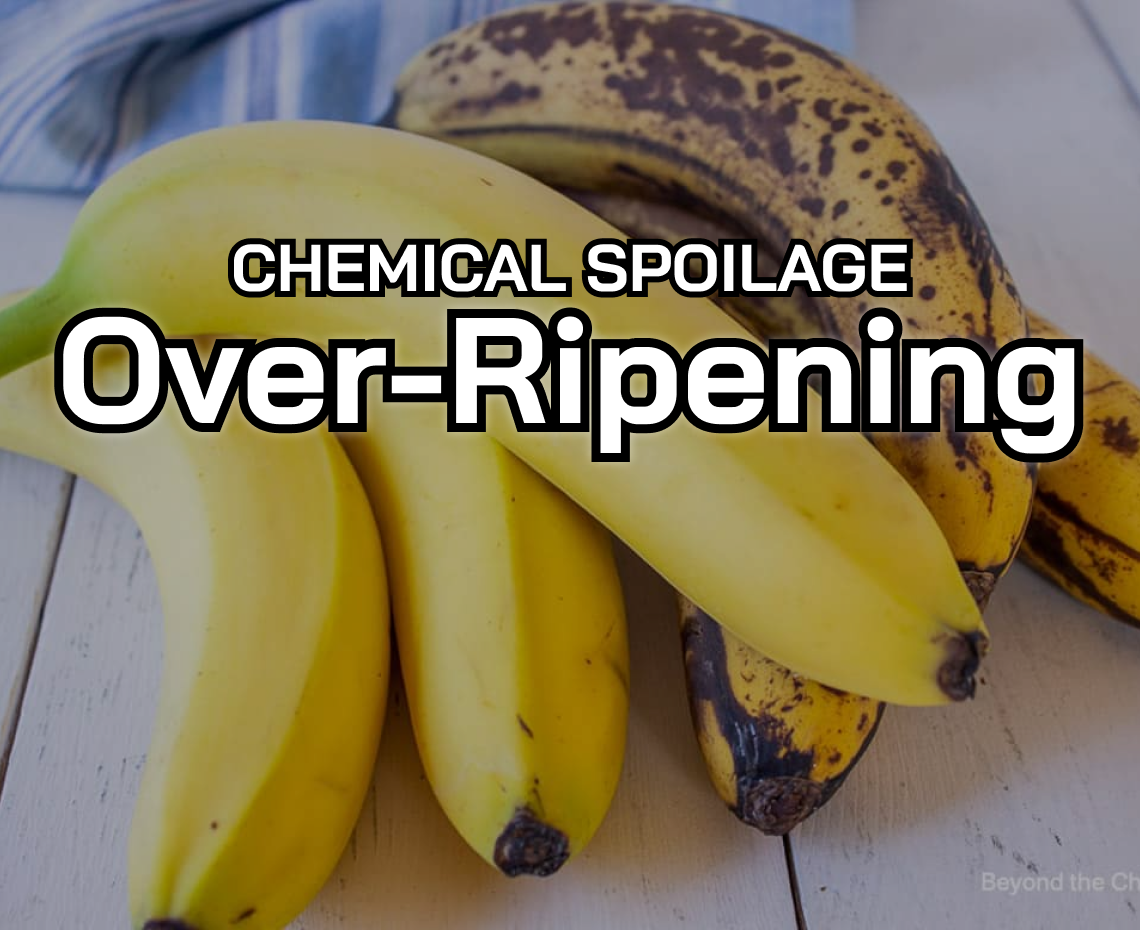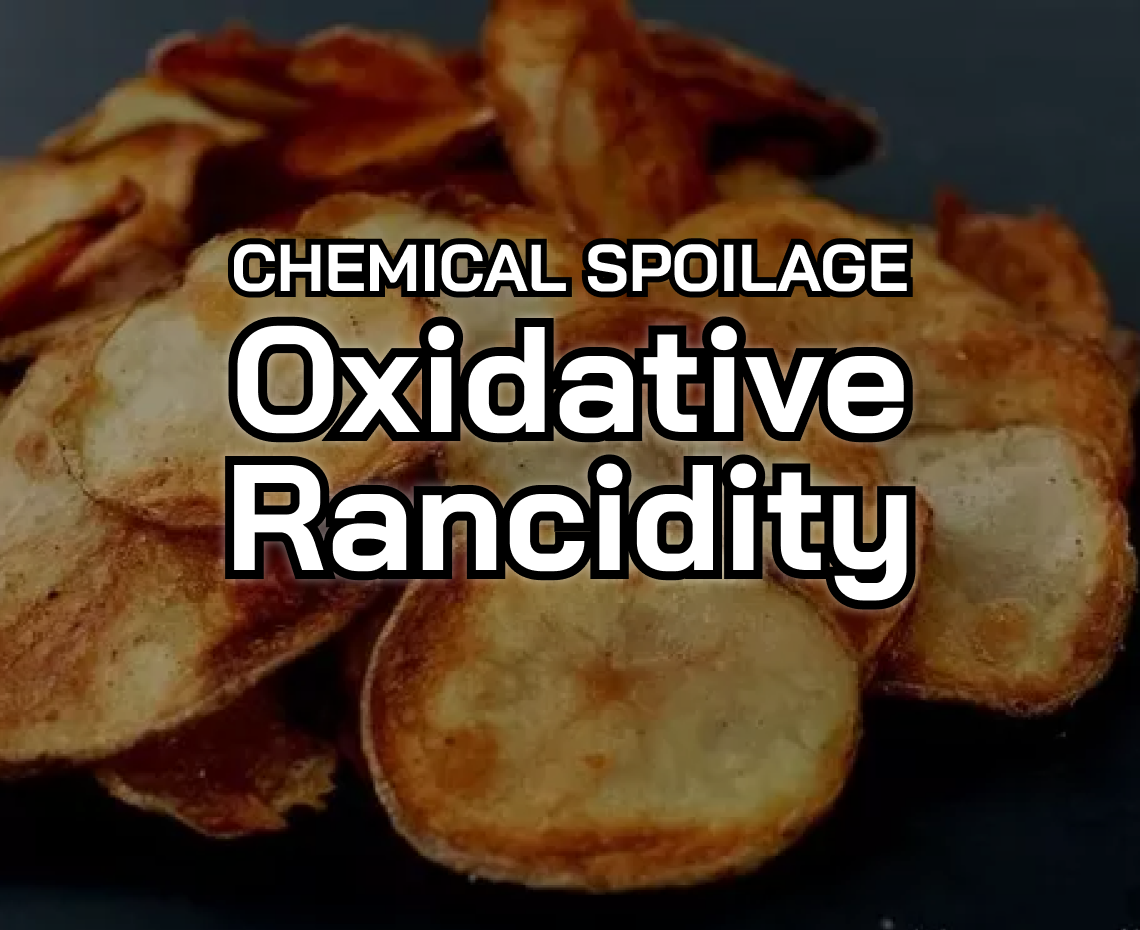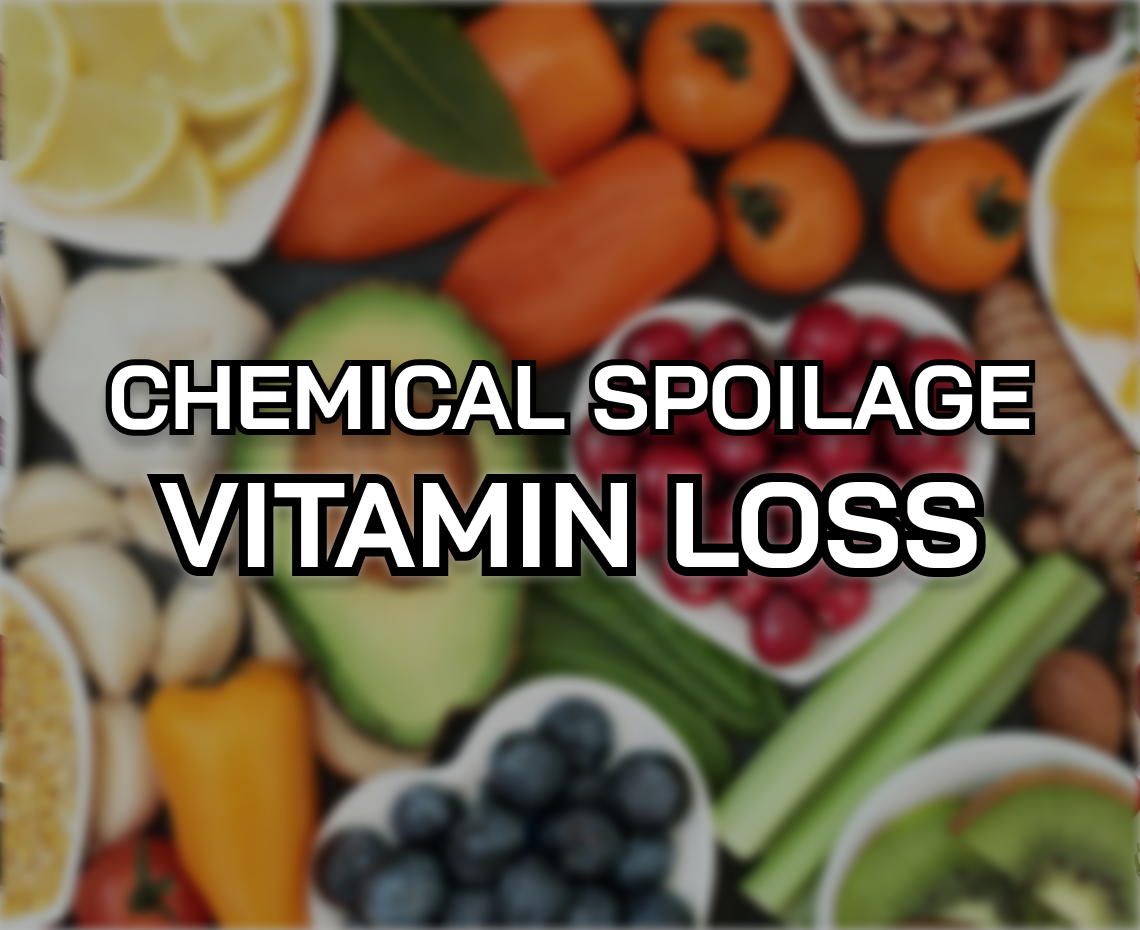Chemical Spoilage: Over-Ripening

Over-ripening results from the (mostly) desirable ripening process and is mainly associated with climacteric fruits (those that can ripen after being picked). Over-ripening, like senescence, only impacts fresh products with ongoing metabolic activity. Canned, dried, and frozen products are unaffected.
Climacteric Fruits
Examples of Climacteric Fruits
The word climacteric refers to fruits sensitive to the plant hormone ethylene, which causes fruit to mature. Examples of climacteric fruits include apples, bananas, most stone fruit (such as peaches, plums, apricots, and avocados), blueberries, cantaloupes, etc. These climacteric fruits also include some foods commonly considered vegetables that are botanically fruits, such as tomatoes and plantains. Examples of non-climacteric fruits include citrus fruits (such as limes and grapefruits), berries (such as raspberries, strawberries, and blackberries), grapes, pineapple, watermelon, pomegranates, etc. The latter group does not ripen after harvest.
Maturity of Climacteric Fruits
For climacteric fruit, a little time and ethylene will promote ripening if the fruit has reached a level of maturity to respond. If the fruit is not climacteric or not mature, senescence will result in product failure without ripening. For example, on a late-January day in California, I recently opted out of purchasing some unripe peaches at the grocery store because I did not expect them to ripen due to the early harvest. In this case, I believed the peaches needed to be more mature for ripening.
Ripening
Ripening occurs when hydrolytic enzymes break down pectin and starches, softening or sweetening foods. Sweetening is often the result of enzymes converting starches to sugar.
While the ripening process is desirable initially, it induces the end of shelf-life when it continues beyond a certain point. However, this point at which over-ripening occurs is subjective, as the desired ripening level can vary with the intended use of the food. For example, consider a banana. The desired amount of ripening differs when making banana bread versus eating the banana directly.
Over-ripening also often leads to microbial growth by breaking down the food structure to a point where microorganisms can access the food's nutrients. However, in most cases of over-ripening, the shelf-life has already been exhausted when this microbial growth occurs.
Examples of Over-Ripening
Bananas
Bananas are a great example of over-ripening because of the general familiarity with the fruit. Green mature bananas are harvested in the tropics before shipment to market. On arrival, the bananas are treated with ethylene in ripening rooms to check the ripening process. The bananas soften and get sweeter, and the skin goes from slightly green to yellow with increasing brown spots until the bananas lack texture and become vulnerable to mold.
As I mentioned earlier, the point at which bananas are perfectly ripe is a matter of preference and taste, meaning bananas become over-ripe at various points. You can slow the ripening process by refrigeration, but the peel turns black, rendering the bananas undesirable.
Avocados
Avocados are another familiar example of over-ripening. Avocados, like bananas, are shipped mature but not ripe. When hard, avocados are less prone to bruising, making this the ideal state for shipping and distribution.
As avocados ripen, the smooth, creamy texture and nutty flavor develop. This ripening process continues unless slowed by refrigeration. Refrigeration does not stop ripening but tremendously slows the ripening process, allowing you to keep a perfectly-ripe avocado ready for your morning avocado toast!
Unfortunately, most readers are familiar with the darkened flesh of an avocado left too long. This darkening reflects the action of polyphenol oxidase contacting substrates as the tissue structures break down during ripening. Again, we have a desirable process that has gone too far.


